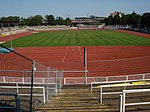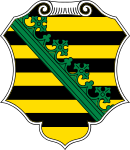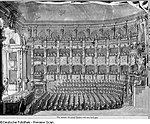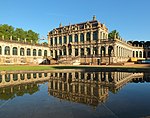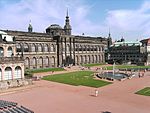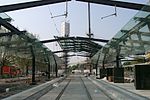Yenidze

Yenidze is a former cigarette factory building in Dresden, Saxony, Germany built between 1907 and 1909. Today it is used as an office building. It is notable for its Orientalizing exterior design which borrows design elements from mosques. The Yenidze Tobacco and Cigarette Factory (German: Orientalische Tabak- und Zigarettenfabrik Yenidze) was a tobacco company started by the Jewish entrepreneur Hugo Zietz, which imported tobacco from Ottoman Yenidze, Thrace (modern Genisea, Greece). The "Oriental" style of architecture recalled the exotic origins of the Oriental tobaccos it processed and functioned as advertising for the firm. It has 600 windows of various styles; the dome is 20 metres (65') high. The architect Martin Hammitzsch (the second husband of Angela Hitler) designed the building in 1907. It has large, colored dome chimneys which resemble minarets. It was sometimes referred to as the "tobacco mosque" (German: Tabakmoschee), a term which is no longer officially used as the building is not a mosque. It is a unique historical feature of the city of Dresden. The building was restored in 1996 and is now an office building.
Excerpt from the Wikipedia article Yenidze (License: CC BY-SA 3.0, Authors, Images).Yenidze
Weißeritzstraße, Dresden Wilsdruffer Vorstadt (Altstadt)
Geographical coordinates (GPS) Address External links Nearby Places Show on map
Geographical coordinates (GPS)
| Latitude | Longitude |
|---|---|
| N 51.058888888889 ° | E 13.726944444444 ° |
Address
Yenidze
Weißeritzstraße 3
01067 Dresden, Wilsdruffer Vorstadt (Altstadt)
Saxony, Germany
Open on Google Maps
